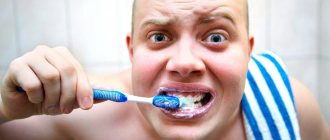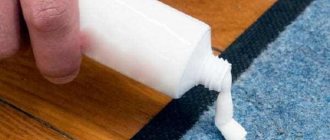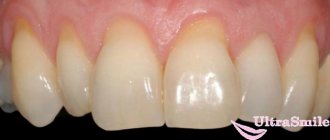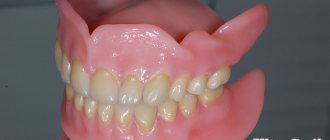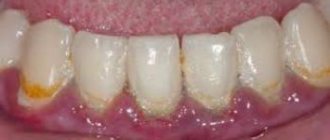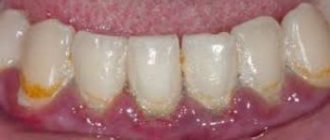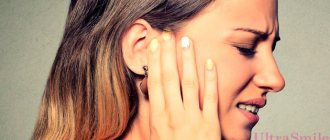20.06.2017
Interesting
We have collected facts about teeth that are truly hard to believe. Some of them could only have happened in Ancient Rome, others could not have happened at all.
All the most unusual things from the world of dentistry: about ancient doctors, the first toothpastes 5000 years ago, unusual advice.
And if we can still assume that soda can whiten teeth, then the rest is hard to believe. We lay out as many interesting facts about dentistry as we can and think about their likelihood.
Each set of teeth is unique
Each person's dentition is unique, just like their fingerprints.
Even if the differences in the distance between teeth in different people are fractions of a millimeter, each tooth has its own size, individual location, shape and a certain distance from neighboring teeth, which makes the dentition as a whole unique. Even two twins do not necessarily have the same dentition, because the formation of teeth is influenced not only by genes, but also by what happened in the first year of the baby’s life. For example, if one of the twins had the habit of thumb sucking, then his dentition will be different from the dentition of his brother or sister. Forensic dentistry is the science that identifies a victim or a criminal by their unique dentition. Specialists use databases with dental prints or x-rays.
Did you know that each person's tongue print is also unique?
№1
All people are born with 20 baby teeth, which are located under the gums. Each baby tooth appears at a predetermined moment for it. The same applies to their loss. They have a limited service life, after which they are replaced by radical (permanent) ones.
There are only two factors that speed up the loss of baby teeth: poor oral hygiene or an accident.
However, despite the fact that we are born with 20 baby teeth and they are temporary, it is advisable to prevent their premature loss. Their preservation ensures the safety and correct position of the permanent molars in the mouth. Usually they do not fall out until the age of 12 (again, if the two factors described above do not influence).
Teeth need saliva
Although saliva cannot replace brushing and flossing, it does serve a protective function.
Saliva helps protect teeth from plaque and also washes away food particles remaining on the surface of the teeth. Bacteria in plaque can lead to tooth decay as well as gum disease. A healthy person's body produces between 0.75 and 1.5 liters of saliva per day, which is about 35,000 liters over a lifetime - enough to fill two swimming pools! But xerostomia (insufficient salivation), a condition that is more common in older people, makes teeth more vulnerable and prone to decay.
Hairdressers used to be dentists
For several centuries, it was quite possible to go to a hairdresser not only for a haircut, but also to pull out a tooth or perform a simple operation. The thing is that back then barbers also performed the duties of dentists and surgeons, since they usually had sharp instruments necessary for operations and tooth extraction. Later, barbers began to be called barber surgeons to better advertise their craft (the word "dentist" came much later). Naturally, then no one cared about preventing tooth decay, as dentists do today, but simply removed damaged teeth.
Not everyone likes straight teeth
Orthodontics is a branch of dentistry that deals with the correction of uneven teeth and malocclusion.
Wearing braces is especially popular in North America (and many other countries), where people associate a beautiful smile with straight, white teeth. To correct uneven teeth, your dentist may recommend installing veneers on your teeth. Each treatment method has its own pros and cons, which you can learn more about from your doctor. Prices for installing veneers in Moscow vary depending on the material (ceramic or composite veneers), dental clinic, and skill level of the specialist. But straight teeth are not the ideal of beauty in all cultures. For example, in Japan, some people prefer to wear special veneers that make their teeth crooked - many young girls install them on their straight teeth.
Seals could explode
The notes of a 19th-century Pennsylvania dentist found references to three strange cases of teeth exploding during his career. The first incident occurred in 1817 when a priest's tooth exploded in his mouth. The monk suffered from severe toothache, which became simply unbearable, after which the tooth suddenly cracked and exploded. The pain immediately disappeared, and the priest went to sleep. The second incident occurred 13 years later, when a Mrs. Letitia D.'s tooth exploded after being in severe pain for several days. Mrs. Anna P.'s tooth also exploded in 1855.
A more extreme case occurred in 1871, when another dentist reported an explosion in an unnamed woman's tooth. The explosion was so loud that the unfortunate woman fell and became deaf for several days. Similar strange incidents were recorded until the 1920s, after which they disappeared no less mysteriously. Researchers believe the explosions were caused by the alloys used for fillings at the time. Early dentists created alloys by mixing metals such as lead, silver and tin. These metals could react and create something like an electrochemical cell inside the tooth, essentially turning it into a small battery.
Also, a byproduct of such reactions is often hydrogen, which theoretically had nowhere to go and simply accumulated inside the tooth. Researchers believe the hydrogen exploded after a chemical reaction between metals created a spark, or even simply while smoking a cigarette. However, some researchers doubt this theory, since there is no evidence that the affected people had fillings made of these particular metals.
Some teeth are very expensive
In 2011, at an auction in the UK, a Canadian dentist bought one of John Lennon's teeth for £19,500 ($30,500).
The buyer hoped to use DNA extracted from the tooth to clone Mr Lennon in the future. In 1816, a tooth said to have belonged to Sir Isaac Newton was also sold in London for £730 ($1,140), equivalent to $35,700 today. It was the most expensive human tooth sold in history.
Unfortunately, these days, the tooth fairy only nets kids an average of $3 per lost baby tooth.
Strange beliefs
In ancient times, there were many strange recipes for eliminating pain or strengthening gums. Some of them may shock modern people:
- In Arab countries in the Middle Ages, patients took laxatives, followed a strict diet and worked hard physically. All these recommendations were supposed to make a person forget about the place causing pain; if the “treatment” was ineffective, cauterization was carried out with a hot iron.
- The most popular mouthwash in the Middle Ages was an infusion of dog fangs with wine.
- A live frog, which was tied to the jaw, was supposed to relieve people from suffering and pain.
- A decoction of earthworms was widely used for instillation into the ears.
Tooth enamel cannot repair itself
Unlike other organs of the human body, which can repair themselves if they are damaged to a certain extent, teeth do not have this ability. If a piece of a tooth breaks off, only a dentist can help in such a situation. If a tooth is cracked, you may need a filling or dental crown. If the root of the tooth is also affected, root canal treatment will be necessary. The outer layer of teeth, tooth enamel, is not living tissue. For this reason, it cannot recover on its own.
Some materials for dentures have to be ordered from foreign dental laboratories
0
Source:
Not all countries can boast a sufficient number of qualified dental technicians. And if there are not enough such specialists, then laboratories are forced to order important materials for the manufacture of prostheses from foreign colleagues. The worst supplier of such materials is China, which works with lead and other hazardous elements.
Some people are congenitally missing teeth
Hypodontia (or dental agenesis) is the absence of one or more teeth that were never formed.
The most common case is wisdom teeth, which are missing in 9-35% of people, due to racial factors. With hypodontia, lateral incisors or second premolars may also be missing. Adentia is a very rare disease in which a person is missing all (or several) teeth. The opposite situation is hyperdentia, when extra teeth grow in the mouth, “in addition” to the normal number of teeth.
Today, the problem of missing one or more teeth can be solved using modern prosthetic methods. The dentist will select the optimal method in each specific case, since there are contraindications that need to be taken into account. Dental implantation in Moscow is one of the most popular procedures on the dental services market.
Brushes and pastes. Start
- The Second World War gave a countdown to the invention of the electric toothbrush (it was powered by electricity, of course). It was patented by the Swiss. A strange idea at first glance quickly won the sympathy of consumers. We continue to learn amazing facts about teeth, or more precisely, about brushes: as many as 3,000 models were patented in the 60s!
- The Colgate brand was in trouble in the Spanish and Latin-speaking countries. The exact translation into the local language "Colgate" meant the order "go and hang yourself." Unexpected, right?
- Toothpaste was first introduced in Egypt 5,000 years ago. The recipe is simple: stir wine and pumice. The brush was invented 4500 years later in China. The materials are more than traditional: bristles and animal hair.
There is a tooth bank in Norway
MoBaTann, or dental biobank, is located in Norway.
Norwegian scientists plan to collect up to 100,000 children's baby teeth. All of these teeth will be the subject of research examining the relationship between environmental pollution and various diseases. It turns out that primary teeth can provide valuable information about the environment and nutrition during fetal development and early childhood. The condition of children's baby teeth is analyzed along with blood and urine samples from their parents. All this information will help provide an understanding of how environmental pollutants affect the health of mothers and children.
general information
Dentistry is a branch of medicine that studies:
- structure, functioning and disease of human teeth;
- diseases of the oral cavity, jaws;
- methods of their treatment and prevention.
History of development in the world
The oldest drill, proving that more than 9,000 years ago people of that time could already drill and fill, was found in the territory of modern Pakistan.
The inhabitants of Ancient Egypt had prosthetics that were made from animal bones, and for the pharaohs and nobility - from ivory, fastened with gold threads.
The dentures of the ancient Incas of the 4th century BC were the shells of sea mussels. This became known after archaeologists found human remains.
“Dentists” in Japan in the old days pulled out incisors and fangs only with their bare hands without using a special tool.
The first woman in the United States to earn a dental degree was Lucy Hobbs Taylor, who studied at Ohio State College in 1866.
Experts studied numerous finds, materials and drawings, as a result of which some interesting facts about dentistry of ancient times became known. For example, it was believed that the main cause of caries is a worm that makes holes and passages.
In ancient times, it was mainly representatives of rich and noble families who had diseased and damaged teeth. With access to high-quality, sweet foods, their teeth were constantly exposed to bacteria that contributed to the development of caries. Along with this, the poor segments of the population, eating simple and affordable food, did not have such serious problems.
History of the emergence of the industry in Russia
The appearance of the first special devices and the beginning of the development of the trend in the country became possible thanks to Peter I. He brought devices for treatment from his trips abroad. Some experts believe that the figure himself is also involved in the facts about the country’s dentistry, since he learned how to remove teeth, he had to pull out as many as 72 pieces.
In 1881, the first school began its work, which trained future dentists; in 1883, 450 people graduated from it.
At the end of the Great Patriotic War, there was a real peak in the development of the industry - new higher educational institutions were opened, some research and experiments were carried out, and the production of equipment and drills was launched. Also at that time, an abundance of fundamental works and interesting articles about dentistry were created and written by leading scientists and doctors.
The most dangerous sport for dental health is hockey.
Contrary to popular belief that the most traumatic sport for the dental system is boxing, statistics claim that 68% of hockey players are injured.
That is, hockey is the most “tooth-dangerous” sport. In boxing, blows in most cases are “softened” by gloves, mouthguards also help to avoid unnecessary injuries, but in hockey - in the event of a blow under the helmet with a puck or stick - there is practically no chance of keeping the dentition intact. Many athletes have to resort to the services of aesthetic dentistry in order to restore not only the aesthetics, but also the functionality of the dentition through the installation of implants or a bridge.
Caries
In the 18th century, the amount of agricultural land devoted to the cultivation of sugar cane began to increase. This led to an increase in the consumption of sugar in food, and consequently to the massive occurrence of caries.
In the oral cavity of newborn babies there are no bacteria that affect the formation of caries. Transmission of these microorganisms occurs later through contact with the mother.
Experts have determined that the peak incidence of caries in the world in our time occurs in the year the production of the carbonated drink Coca-Cola began.
During research, scientists have found that cocoa powder contains a component that prevents the appearance and development of caries. However, we are talking about pure cocoa, and not about sweet chocolate with a high sugar content.
William Semple proposed in 1869 that sugar be added to the chewing gum process to improve taste, which ultimately led to an increase in the incidence of dental caries among the population.
In China about
In addition, in China there is a special holiday - “Love Your Teeth Day”, which takes place on September 20th. This day was first celebrated in 1989. In this way, the state decided to attract people's attention to issues of dental health and proper oral care.
The Russian-American clinic “US Dental Care” in Moscow specializes in a wide range of dental services - from ultrasonic cleaning, teeth whitening, aesthetic dentistry to complex surgical operations, implantation and dental prosthetics. For young patients, there is a pediatric dentistry department, where children are provided with a special approach taking into account age-related psychology. American dentistry is conveniently located in the center of the capital on Olimpiysky Prospekt (metro Prospekt Mira, Dostoevskaya). The elite dental clinic is equipped with the latest modern equipment, and a team of highly qualified dentists regularly undergo internships in America and improve their professional level.
The article was written using primary source materials https://www.studiodentaire.com/articles/en/10-things-you-didnt-know-about-teeth.php
Guinness Book Records
New Zealand has set a record for brushing teeth in a circle. The action was attended by 400 schoolchildren from Chilton St James's School, each of whom brushed the teeth of a friend nearby. Previously, 300 people were involved in a similar event in America.
The largest collection of pastes is owned by American prosthetist doctor Valery Kolpakov, who was born and lived until recently in Russia. It contains more than 1,800 tubes of different types and flavors of this oral care product.
The unusual record for spinning a basketball on a toothbrush belongs to Tanshwar Guragai. He managed to hold the spinning ball for a full 22.41 seconds.
Georgian resident Nugzar Gograchadze was recognized as the person who has the strongest teeth. Holding a rope in his mouth, to which 5 railway carriages were attached, he managed to move them from their place.
Brad Pitt traded his radiant smile for a movie role
0
For the sake of the role of Tyler Durden in “Fight Club,” Brad Pitt took a desperate act, sacrificing his own teeth. The hero of the picture was supposed to appear to the viewer as a rowdy and brawler, so a neat appearance was an undesirable feature of the actor. Brad Pitt wanted to play Tyler Durden so much that he decided to have several teeth removed.
